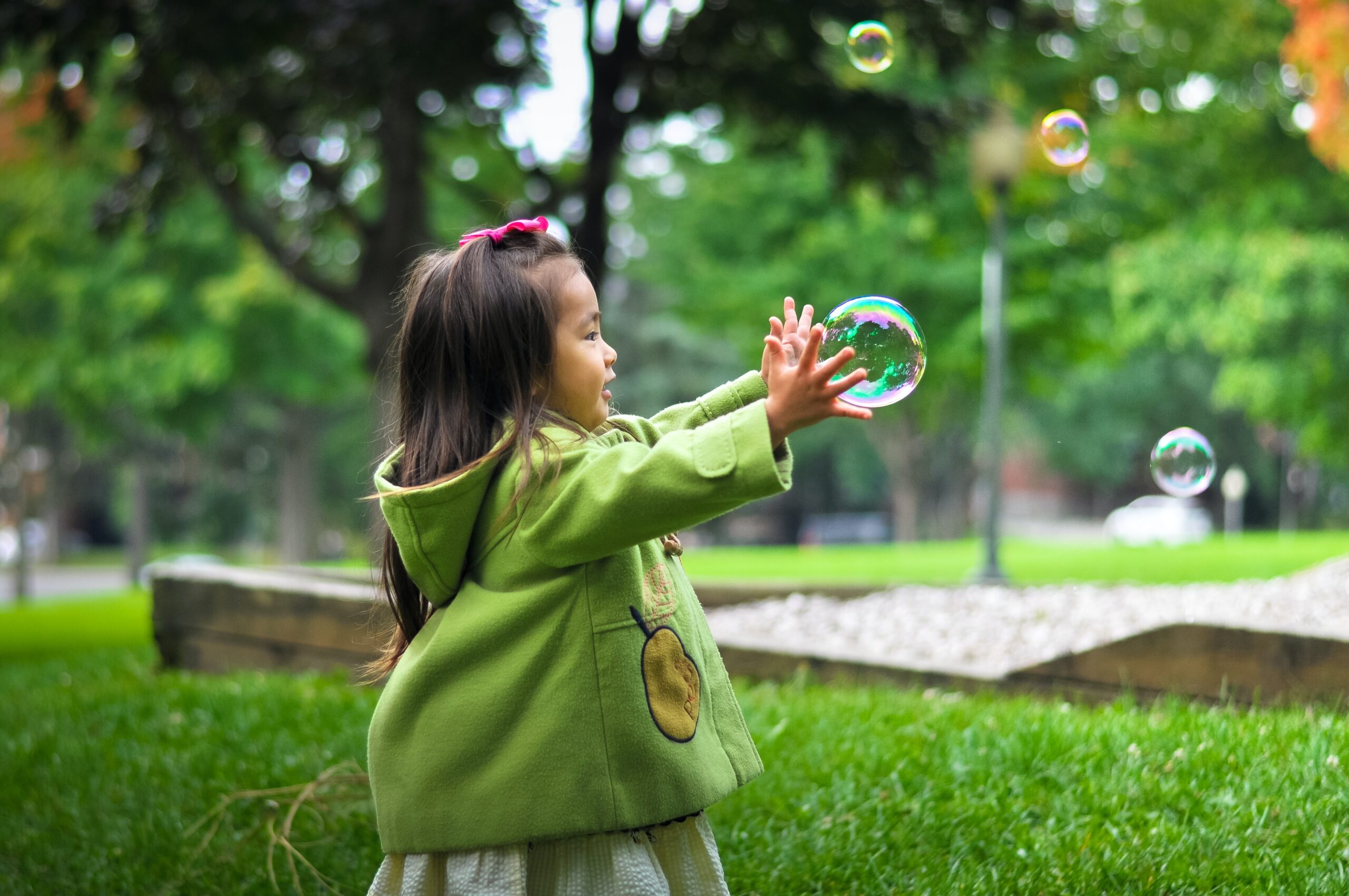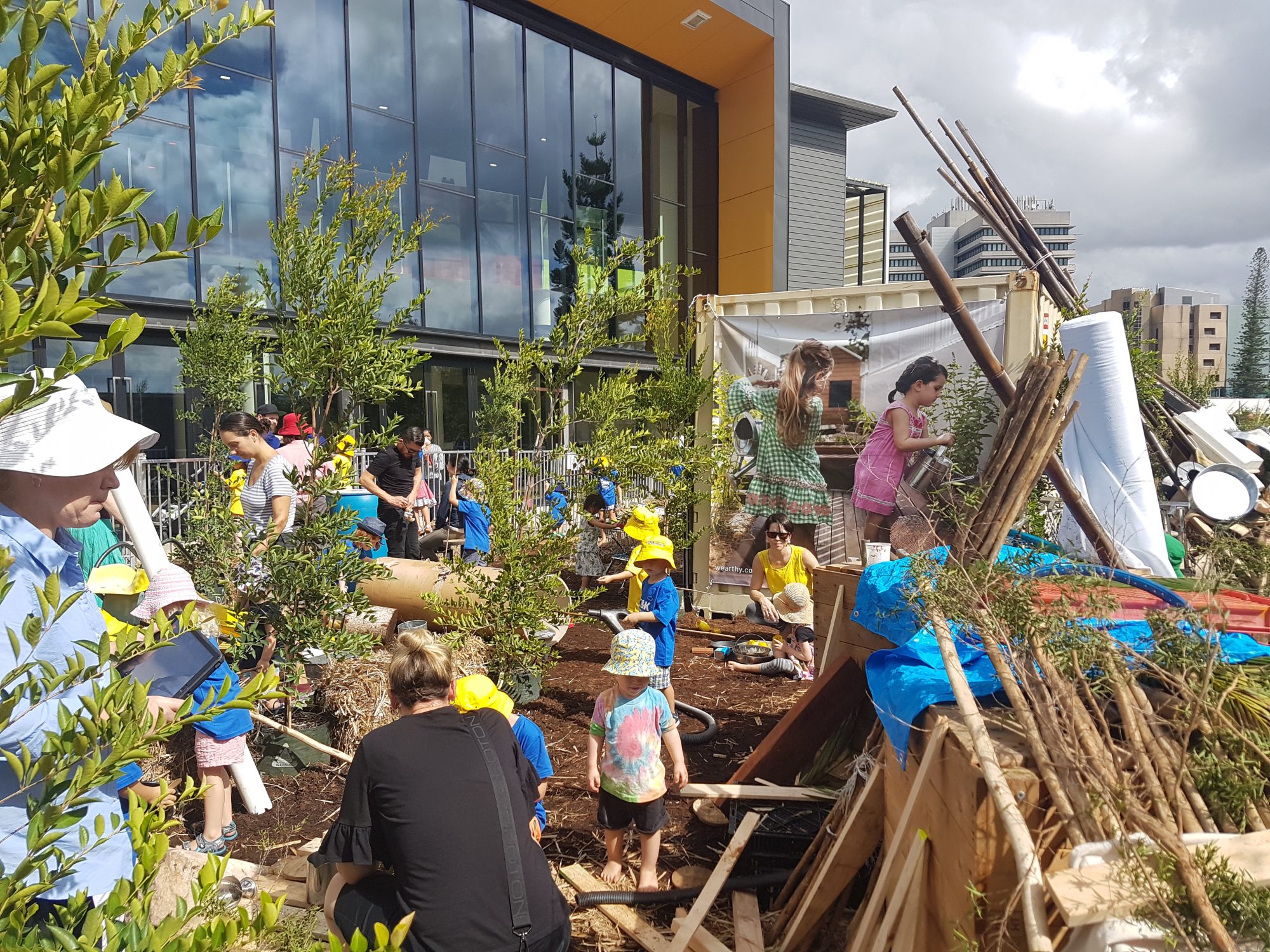Connection with nature creates the arena to think outside ourselves. Being supported by the environment increases the level of respect and value to the individual self. Therefore, caring for nature ultimately means having higher regard for our own existence within it – taking responsibility and ownership in compassionately relating to the environment.
When we’re embedding sustainable practices into early childhood from the beginning, we can teach children how to contribute and take ownership of their environment.
The challenge children face today is their increasing disconnect with nature. This is perhaps caused by the density of housing where they live, lack of natural materials they interact with or limited time they spend outside. With our cities growing and our suburbs sprawling, it’s easy to see how children today may be suffering from disconnect. Less space to play, busy parents, plus the ease of screen time – it’s no wonder children are lost when it comes to forming a relationship with nature
In early childhood education, this is the time that children are establishing trust for the world and educators have the opportunity to lead and model the values of connection. Adults make the mistake of trying to “teach” connection – but children already inherently know how to connect. Instead, we can support them by creating a space for those values to be encouraged, explored and elevated.
To make an impact, we naturally look to the big names who changed the world, but it’s the people within the community who started with one child that we can draw inspiration from.
Park the idea of making grand gestures and start with your own fulfilment as a parent, and as a person. How do you engage with, respect and show consideration for nature? How much emphasis are we placing on the beauty of nature, and our connection to it?
This will have a monumental impact on the children you care for and it is what they will hold onto for the rest of their lives.
The good news is that as parents, we can have a big impact on the way children interact with their environment.
It’s proven that the most effective way to inspire change is to be the example of that change.
Imagine the play environments that you seek for your child as the banner for the world in which you want to see and teach them. What is the message you are sending? What are your values? Where is the child represented? Where is nature present? Another great way to see change is by empowering those who create the change we want to see. Small changes can be made every day to make a monumental impact. Here are a few things you can do (if you’re not doing already) to support exploration, celebrate learning and inspire change.
- Grow your resources: Before you start saying you ‘kill everything’ and stop reading – don’t. I’m referring to the growth of children, not the growing of plants. Children being supported with what they need will guide you into creating an environment together. Ask yourself: what do children need to grow? And take action on that answer. It might be a positive relationship, room to move or space to stretch in the environment we create and plan. How are you growing?
- Celebrate what matters: Children need nature to learn and grow. However, what is the message we are sending to them if the environments and toys we give them are full of plastic, rubber and disposable rubbish? Remember, we are not just supervisors of children, we’re their teachers. So, let’s celebrate the dirt, mud, sand and water that bind play and learning together. Engage in arts and crafts for drawings and posters in the home around recycling, and create open-ended learning experiences that go for days and weeks. Lastly, let’s create an environment that we wish we had ourselves as children.
- Sit intentionally: I don’t mean sit in the same way you would sit when arriving home after a big day. I mean actively sit, in your environment, with children and just be there to play and build relationships. It’s much harder than it sounds. It takes confidence, persistence and a willingness to be the child’s equal that will bring the walls down and allow a relationship that’s based on respect to grow. When we use a natural environment to sit, it makes for an even deeper connection. When a child’s needs are being met and they feel supported, it helps the child to value what supports them: a tree they can climb, a bush they can disappear into, a stick they can swing or an adventure with friends. These all contribute to how they value their environment and the people within it. Commit to sit (intentionally and actively).
All in all, engaging children in these conversations is about understanding the importance of social, developmental and environmental sustainability. It’s not about a lecture in the environment, or a to-do list but about first instilling the respect and love of the environment, to foster a wanting to protect the place they love.
To hear more play advice from Lukas, and a stellar line up of parenting experts from Australia and across the globe, be sure to tune into the Play It Forward Podcast.









